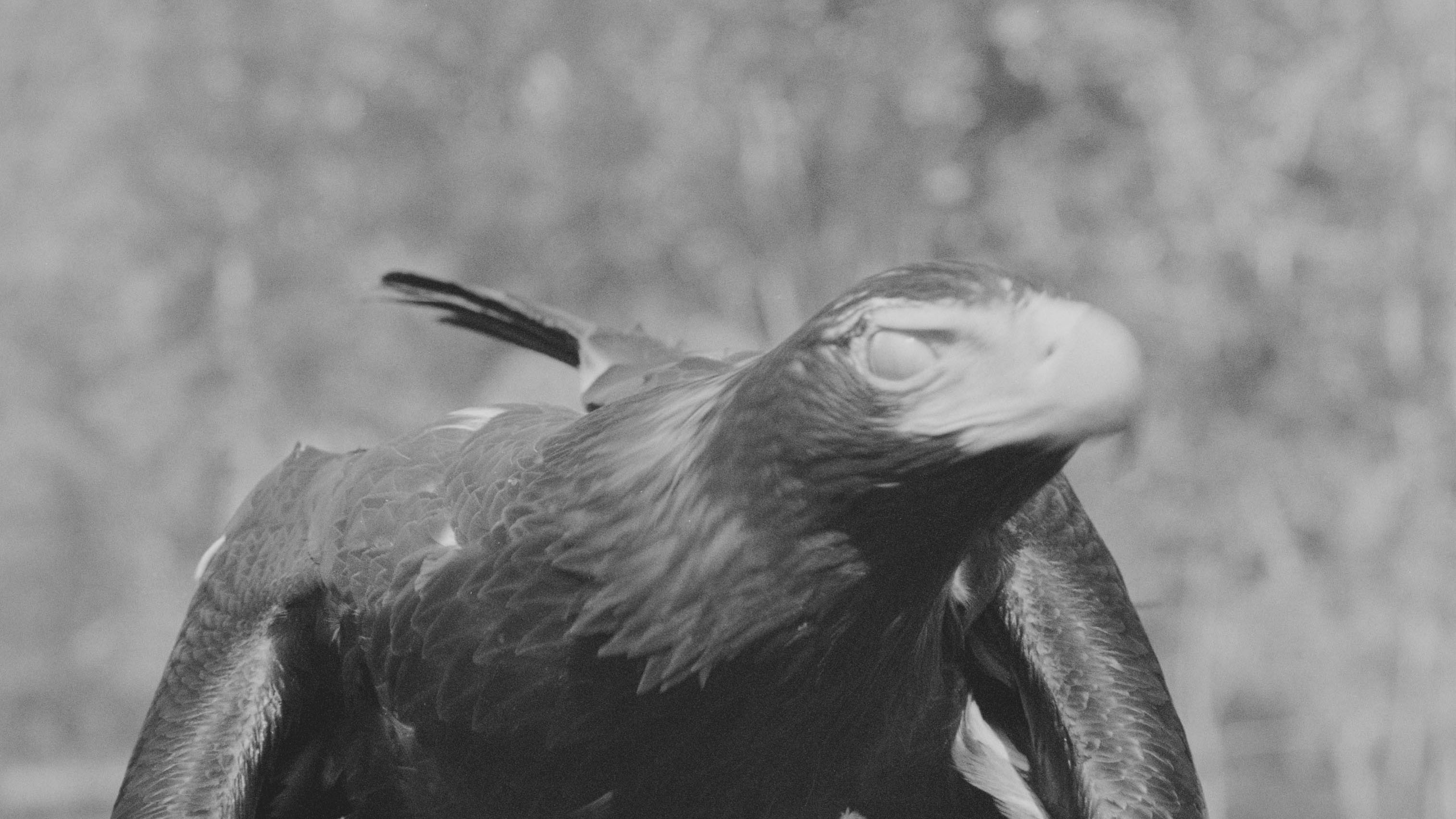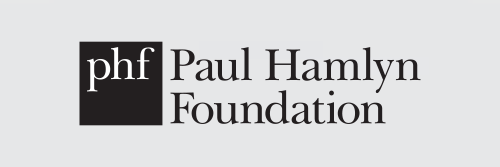
The Green Drum with Matt Dunne
Open Eye Gallery’s placement Megan Edwards speaks with Matthew Dunne on his submission ‘The Killing Sink’ for the gallery’s open call Open Source #20. The interview explores his practices and how these enable him to present the complex relationship between people, nature and place which his work focuses on.
Megan Edwards: Underpinning your series ‘The Killing Sink’ is a recurrent thread that, when presenting social issues, there is a responsibility to be honest in your work and not shy away from the ugliness that you may find. In your presentation of environmental degradation you incite an introspection for the viewer. In your website’s about section you detail a desire to be an “unstoppable force to society’s immovable lack of environmentalism.” How does your photography seek to address this?
Matthew Dunne: I think it’s more that photography is one outlet of that energy I have. It’s a bit of a dramatic and silly wording, but I think what’s true about it is that I don’t find myself fatigued by the constant barrage of news about environmental collapse, social selfishness, political dithering and corporate malpractice. These things are, in a way, pushing me to continue to be outside with a camera, be researching and reading and not sitting still.
Coming back to my photography, primarily I am hoping it addresses society’s lack of environmentalism by bearing witness and communicating something we know but don’t articulate. Honesty is one of the most interesting concepts to me and I’m often motivated to find ways to make photos that ask people ‘are you happy with this?’. Society is something we all create and we all bear some responsibility for, but we can only evaluate and build if we know where we are and what the current state of things is. Similarly, I’m trying to get at the psychological space of something – what does it feel like for an Eagle to die? That’s not something we can say definitively, or even scientifically, but I think artistically there’s a lot that can be shown there. What does it feel like to see the environment collapse? What form of grief is that? How does our role as antagonists augment that experience?
I think the notion that photography can shift national debate, or influence policy, is probably a naive idea at this stage, so I’m not trying to change the world in the most ambitious sense of the phrase. That being said, I’m a big believer in changing my world – so pretty much anyone who knows me, or looks at this work, will likely know more and feel differently than they did before. That’s something to be proud of, I think.
It is certainly something to be proud of. Though I understand your caution against naivety, as you said, “people will likely know more and feel differently than they did before” and what a great launch point to start from! I’d be interested to know if there were any works/artists which perhaps evoked these similar questions in yourself?
This is a tough one for sure because the times where these questions have been evoked for me from artists usually come from reading about their work or from interviews, rather than the work itself. While I do not wish to make images like him, I think it’s hard to look past Robert Adams. More evocative than the photographs is his commitment to making art about the love of the world and grief at our treatment of it. There’s a video interview with him that I encourage everyone to watch where he asks ‘what have we traded?’ and it’s just the most moving expression of sadness at centuries of madness. I don’t think there has been anything as motivating for me, artistically, than that video – it encompasses all the care, attention, sadness, love and urgency that I feel is vital to working with the environment.
Beyond Adams, I had the chance to interview Garrett Grove a few years ago, he wrote to me that ‘we’re no longer in Eden’ and I’ve been thinking about that line since 2017. He’s right – if there ever was a peaceful harmony between humans and nature it was just a myth – so how can we work towards something we’ve never had? What should we be imagining? We can never have an equilibrium of harmony, that’s naive, so then what?
This series has a great emphasis on place, over the course of your project have you learnt anything new about what is, to you, a familiar landscape?
I don’t know that I learned anything new about the landscapes around me. Australia is a place that’s steeped in uncomfortable and evil actions of colonisation and invasion. I’m a big fan of the Massacre Map – this highlights that the land here is already quite ugly and brutal. I was just layering on top of what’s already here. I really don’t think it’s possible to escape that anywhere in Australia, and I think it’s important to constantly remember where we are.
I think what I have grown interested in, though, is trying to push back on the idea of romantic or neat landscapes. From an environmental point of view, rolling green hills are treeless monocultures that likely support very little biodiversity. Yet a photograph of this is likely quite visually pleasing – so there’s a disconnect there. Our mind’s enjoyment of symmetry and minimalism is the visual opposite of the unplanned mess that is wilderness. So there are some photographs I made that I hope pull on both threads – looking good but of something loaded and unpleasant.
Interestingly, your landscape photographs were amongst my favourites in your series. What they call attention to is the insidious realisation that, though these awe-inspiring scapes of expanse are very pleasant to look at, the reality of these landscapes is one of slow violence – an uneasiness that is difficult to shake. This more subtle demonstration of environmental degradation sits in contrast to your more overt portraits of an eagle’s death, how does emergency play a role in your work, if any? And how would you consider this presence or absence in impacting your audience?
Emergency plays a complex role in my work because there’s an insidiousness with which timescales confuse our ability to care. What I mean by that is that the cycles of death and regeneration happen on a longer and slower timeline than many of us make decisions. I remember being in Iceland, a place covered in natural beauty and signs telling you to stick to the paths (because the land regenerates so slowly there), yet many tourists have such short term motivations (a great view, a good photo) rather than imagining their impact over centuries. The urgency of an emergency is something I want to impart – we simply have to do better, right now – but it’s complex because the time scale humans are most comfortable with is completely inadequate for this type of tragedy.
More broadly, I think any attempt for the type of art I make to capture urgency is likely too slow. If it takes five years for me to make something (which it did for this work) then that’s likely unacceptable a time scale for an emergency. That is an inadequacy of my approach.
I think, though, I want to hit emotions that are different to the outrage, panic and frenzy of the 24 hour news cycle version of emergency. I want to aim for something closer to grief and guilt, these are the effects of presence and absence I am hoping to move towards. There is also complexity in the work as well, though. I think that apex predators challenge us in ways we are not honest about. An eagle is a violent animal – it is not mammalian and shares little in common with us – it’s carnivorous and sharp, so much of its body is tuned for specific forms of predation. It’s a hard animal to love in a lot of ways (especially if you’ve ever watched one eat, gross), but there’s elegance in the power of these animals so I’m trying to find a way to show what’s worth admiring while not shying away from the reality that this is a predator.
It is interesting that you state that Eagles are a violent animal and equally that they share little in common with ourselves, when this project centres around our very own violence and perhaps the two are more similar than we realise. Your photography therefore explores the tension in mortality; death at the hands of Eagles and those same Eagles deaths at the hands of man. Is this a project that is more focused on the life or death of the Australian natural landscape? What do you believe that this distinction brings to the understanding of your work, if any?
This is absolutely a project about death and I’ve been describing it as a form of public grief. I hope that this distinction really holds us (Australians) to account – why are we killing what we love? How can we be proud of our legacy so far? What have we traded and how could it possibly be worth it? These aren’t easy questions to answer but I want my views of mortality and photography to ask people to sit with these incredibly uncomfortable questions.
We still have, I think, this idea that nature is unkillable. I hear a version of this when people discuss climate change and they say ‘well we may be gone but the Earth will still be here’. To me that is impossible to respect, how can someone be so blase about the death of so much that makes our world special? Australia is defined by unique wildlife, it’s something literally everyone who lives here cherishes in some way, but can we claim to love it if we aren’t moved by its death? Do we get to be stewards of this land when we act this way? I think mortality and grief force us to contemplate that and, I hope, realise that we cannot be who we are for any longer, perhaps we should never have been at all.
More generally, there are many unique landscapes in decline in Australia – this map shows 19 of them – The Killing Sink’s focus on mortality very much at our own hands is a call to think more widely of our place in the world. I want us to be better at allowing non-human life to flourish, I think mortality can motivate.
In your responses you raise questions of guilt and grief, highlighting man’s complicity and how you seek to leave us to explore our own discomfort. For me, this is most prevalent in your photo of the eagle skull held by a woman and casting a shadow behind. It is reminiscent of a puppeteer putting on a performance, enacting a narrative much like how a photographer does. And whilst the narrative that you have created is a brutal depiction of culling in Australia, so too do you remedy what can be a bleak outlook in your assertion that “mortality can motivate”. There is such a finality in death where the damage caused by man can oftentimes feels irreparable, but do you believe that there is any hope to be taken from this project?
Oddly there is a lot to be hopeful about, but it’s not literally in the project. Through working on the project I met so many caring and committed people who were rescuing, caring for or just genuinely observing eagles in ways that are incredibly uplifting. One guy I connected with took me for a walk to see an eagle nest with a young eagle inside of it. For months he visited that nest taking photos and observing the young eagle grow and eventually take flight – there’s so much hope in people like him.
I also learned that while this crime is widespread it is not considered an existential threat to the animals. That’s both upsetting (why so widespread?) but ultimately reassuring that they will continue to live even if the violence doesn’t shift. However, the other hopeful thing I found was a renewed public and governmental interest in prosecution. Many, many people are completely fed up with sloppy sentences and poor legal outcomes for criminal behaviour, including Victoria’s Minister for the Environment. Laws are hard to shift, and prosecution is always tricky, but there is an increasing rage in Australia about environmental destruction and I am hopeful that we will continue to exert huge public pressure on individuals, activities and companies that threaten the environment. I just hope that we’re not too late to change culture.
Going forward with your photography, do you see yourself maintaining an environmental line of enquiries in your practices, or do you see yourself expanding beyond this to other social causes?
At the moment all I want to do is continue to delve into environmental issues. Other social issues are important, and in my day job I get to work on a few of them. But, to me, climate change and humanity’s relationship with nature is the biggest issue facing us and given how vast nature really is there’s no shortage of stories to follow. Recently I’ve started working on two new photographic projects – one a look at the labour of conservation, the effort, sweat and human inputs into correcting our mistakes, and the second examining the ocean as a site of leisure, terror, commerce, military activity, conservation, exploitation, etc. I remain interested in the environment and rely on conceptual frameworks to be the artist I want to be, so I do think I’ll continue plodding along banging the green drum.
And what would your advice be to someone trying to find their voice and occupy space in the sphere of activism and art?
I don’t think I’m one to give much advice as a lot of what shaped me was really lucky. I was lucky to have a great relationship at University with a woman who was much smarter than me, and that was an amazing amount of growth. I was lucky to work deliberately and get into a job in a field that needed workers (rural education) that allowed me to grow. I was lucky something switched early enough that it was easy to become a more careful and conscious person. I was lucky my first job out of Uni set me up really well. None of this was a sure shot, I look back and am amazed it happened to me.
However, I probably have found a few things really helpful. Firstly, trust people – I have found this to be the source of so much growth. In activism and art, trusting people encompasses everything from the research I do (finding people who can show me stuff through Facebook), to just asking questions of experts, to the shape the work takes. Second, go further than the surface. Photography, like much art, can so easily be superficial – and there are no shortage of art/activism/environmental projects that are a cursory look at an issue, a place or a thread. Go deeper, do more research, find the grey areas, the hard to answer questions, the bigger problems, the stuff that makes your own motivation potentially fall apart. There is a perennial need for art that is engaged and smartly considered, but I don’t think we have as much a need for art that is simple or shallow. Finally, there seems to be a thread of the art community that wants to shy away from having an outlook or opinion, letting the audience do all the heavy lifting. I can’t look at the environmental conditions here and not have an opinion, and I think it’s cowardly and lazy to avoid sharing something personal with an audience. You certainly don’t have to visually berate people, but activism is about caring and trying to reach more people, you cannot be half-arsed about where you stand.
I try to avoid these traps by wanting to find issues that aren’t settled and trying to find my way through, through reading, discussing and photographing. I don’t think a complicated approach to research is needed: read and talk more than you photograph. Ultimately I don’t mind a bit of romance in photographs, but there’s just no point having ONLY romance. A romantic attitude, in this day and age, towards the land is willfully naive and problematic. We are killing so much of our planet, to simply accept an idealised visual representation is to let ourselves off the hook completely and irresponsibly ignores the most pressing issues of our time.
Even folks who make youtube videos about landscape photography (where the images are really romantic) have portions of their videos where they talk about pollution, leaving it better than you found it, over visitation, etc. There are always opportunities to include ethics in our work, I suppose I view photography projects whose main output is surface beauty, however artful, ethically agnostic, and I can’t respect that. If you love the world enough to spend time photographing it, being neutral in that work just doesn’t pass muster for me.
So – what’s the code? Research a lot, let that sink into the work. Don’t shy away from having an opinion, and don’t hide from including an ethical component in the work, or the commentary around it.And, as always, leave it better than you found it, no matter what you do.
Words by Megan Edwards

